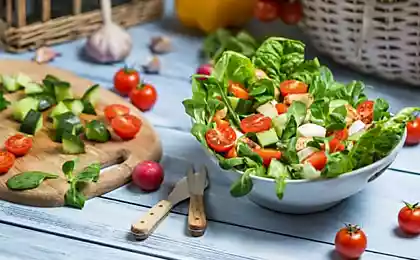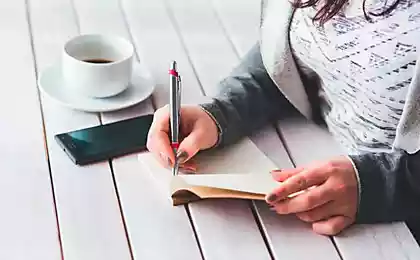627
Omega-3 and omega-6 fatty acids: the ratio has a value of
The problem of excess weight affects many people. According to statistics, of the 1.5 billion people are overweight and 500 million obese. Dr. Artemis Simopoulos, founder of the Center for genetics, nutrition and health (non-profit educational organization in the district of Columbia), and Dr. James Di Nicolantonio of the mid-America heart Institute of St. Luke (Kansas) spoke about the effectiveness of omega-3 for weight loss, as well as about the optimal ratio of omega-3 and omega-6 fatty acids in the diet of modern man.

Omega-3 and omega-6 what is their ideal ratio
Dr. Simopoulos stated that since 1980 there have been many studies aimed at investigating causes and ways to control obesity, however, both in developed and in developing countries, the weight of the population continues inexorably to grow.
Polyunsaturated fatty acids omega-3 and omega-6 essential for the regulation of hormones responsible for the stability of blood sugar levels, nervous system health and a decrease in appetite. However, it is important to understand that the positive effect of the ratio of these acid groups must be optimal.
Regarding the optimal balance of omega-3 and omega-6 experts still argue: the relationship of these polyunsaturated fatty acids in the recommendations of different countries varies from 1:10 to 1:2 and depends on the state of human health.

However, experts agree – the diet of modern man is the amount of omega-6 fatty acids greatly exceeds the amount of omega-3 that leads to the development of two unhealthy conditions:
Pufas are not synthesized in the body, because they have to do it from food. The three most important fatty acids are:

Omega-3 fatty acids:
Obesity, satiety and the brain: omega 3 for weight loss
Appetite and the number of necessary meals will largely determine the brain, based on information about pH, the size of the stomach and metabolism.
In the gastrointestinal tract secreted hormones that control the amount and frequency of food intake: cholecystokinin signals the brain about the saturation, ghrelin – the hunger. However, the main hormone regulating appetite and metabolism is leptin secreted by adipose tissue.
Omega-3 fatty acids help to reduce the amount of adipose tissue and weight loss.
The amount synthesized in the body leptin increased with increasing fat mass. Acting on the hypothalamus, leptin suppresses orexigenic (stimulating the appetite) and activates anorectic (appetite-reducing) effects. Patients with obesity the leptin level is increased so that the sensitivity to it is reduced, i.e. develop resistance to leptin, with the result that a person hard enough.
Of course, the development of resistance to leptin contributes to several factors:
Omega-3 fatty acids help to reduce the amount of adipose tissue and weight loss. Also omega-3 essential for the generation of lipid mediators (resolvins, protecting and Martinov), which have neuroprotective effects and inhibit inflammation. Omega-3 fatty acids contribute to a more intensive oxidation of fatty acids and the mitochondrial biogenesis.
The rules of health care spins on all occasions
The frequency of UPDATES of the human body
Mammalian cells are not able to convert omega-6 fatty acids to omega-3 due to the lack of necessary for the process of the enzyme. Omega-3 and omega-6 are not interchangeable and have the opposite physiological effect, because of their balance in the diet plays an important role.published
Source: estet-portal.com/articles/interesnye-fakty/omega-3-i-omega-6-zhirnye-kisloty

Omega-3 and omega-6 what is their ideal ratio
Dr. Simopoulos stated that since 1980 there have been many studies aimed at investigating causes and ways to control obesity, however, both in developed and in developing countries, the weight of the population continues inexorably to grow.
Polyunsaturated fatty acids omega-3 and omega-6 essential for the regulation of hormones responsible for the stability of blood sugar levels, nervous system health and a decrease in appetite. However, it is important to understand that the positive effect of the ratio of these acid groups must be optimal.
Regarding the optimal balance of omega-3 and omega-6 experts still argue: the relationship of these polyunsaturated fatty acids in the recommendations of different countries varies from 1:10 to 1:2 and depends on the state of human health.

However, experts agree – the diet of modern man is the amount of omega-6 fatty acids greatly exceeds the amount of omega-3 that leads to the development of two unhealthy conditions:
- the increase in the number of white adipose tissue;
- chronic inflammation.
Pufas are not synthesized in the body, because they have to do it from food. The three most important fatty acids are:
- alpha-linoleic acid;
- docosahexaenoic;
- akozapentaenova.

Omega-3 fatty acids:
- reduce the risk of coronary heart disease;
- reduce the risk of mental illness;
- reduce severity of inflammatory diseases such as rheumatoid arthritis;
- reduce resistance to insulin.
Obesity, satiety and the brain: omega 3 for weight loss
Appetite and the number of necessary meals will largely determine the brain, based on information about pH, the size of the stomach and metabolism.
In the gastrointestinal tract secreted hormones that control the amount and frequency of food intake: cholecystokinin signals the brain about the saturation, ghrelin – the hunger. However, the main hormone regulating appetite and metabolism is leptin secreted by adipose tissue.
Omega-3 fatty acids help to reduce the amount of adipose tissue and weight loss.
The amount synthesized in the body leptin increased with increasing fat mass. Acting on the hypothalamus, leptin suppresses orexigenic (stimulating the appetite) and activates anorectic (appetite-reducing) effects. Patients with obesity the leptin level is increased so that the sensitivity to it is reduced, i.e. develop resistance to leptin, with the result that a person hard enough.
Of course, the development of resistance to leptin contributes to several factors:
- the use of sugars, especially fructose, in large amounts;
- eating unhealthy fats;
- lack of physical activity.
Omega-3 fatty acids help to reduce the amount of adipose tissue and weight loss. Also omega-3 essential for the generation of lipid mediators (resolvins, protecting and Martinov), which have neuroprotective effects and inhibit inflammation. Omega-3 fatty acids contribute to a more intensive oxidation of fatty acids and the mitochondrial biogenesis.
The rules of health care spins on all occasions
The frequency of UPDATES of the human body
Mammalian cells are not able to convert omega-6 fatty acids to omega-3 due to the lack of necessary for the process of the enzyme. Omega-3 and omega-6 are not interchangeable and have the opposite physiological effect, because of their balance in the diet plays an important role.published
Source: estet-portal.com/articles/interesnye-fakty/omega-3-i-omega-6-zhirnye-kisloty























